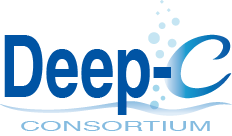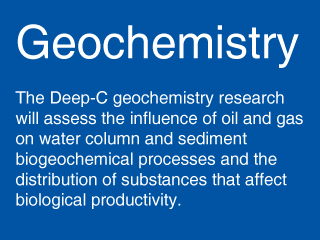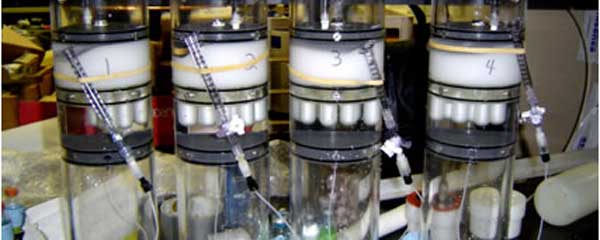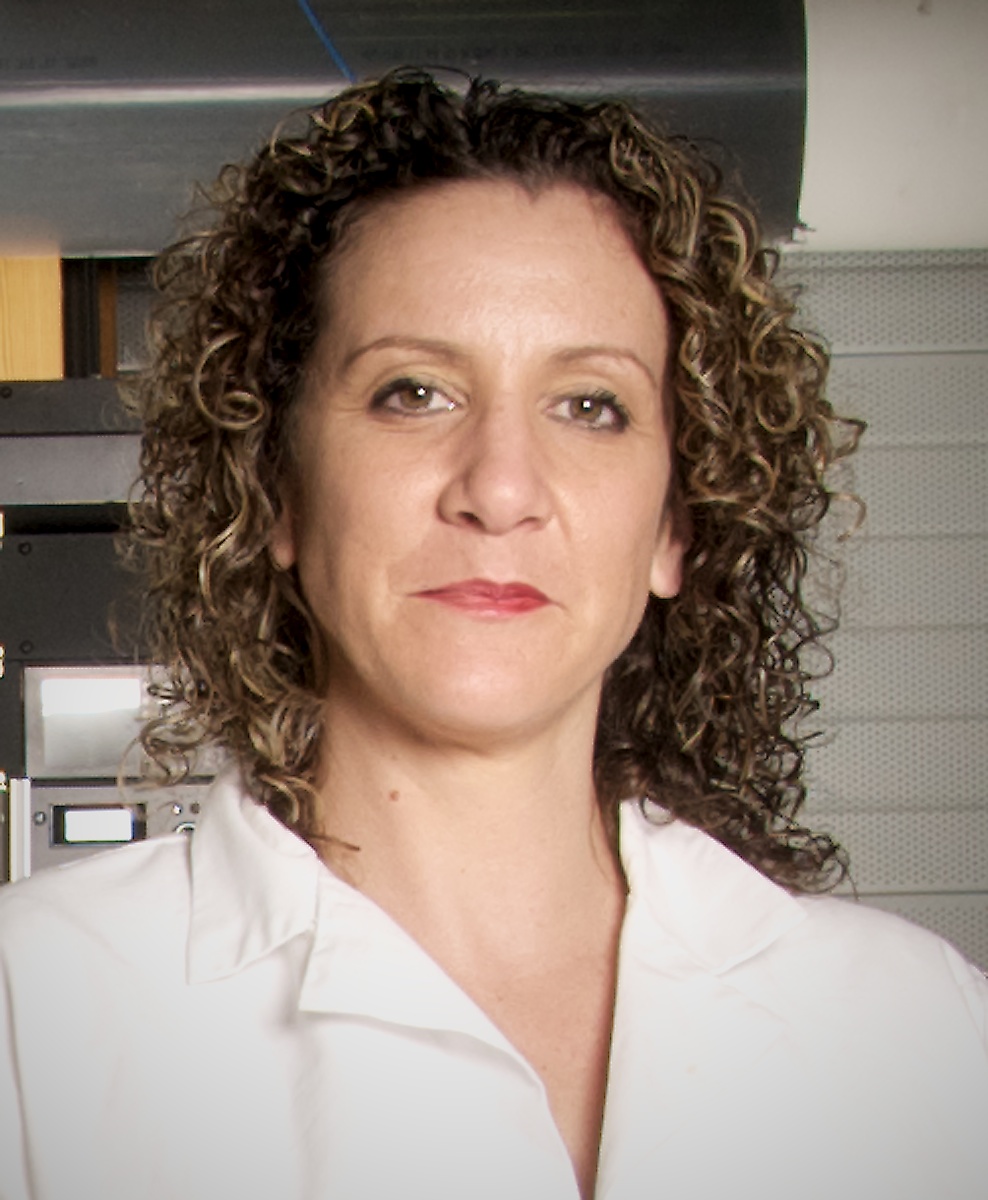Geochemistry, Sedimentology, Hydrocarbon Chemistry, and Isotope tracing

One of the key questions the Deep-C Consortium seeks to answer is "how does the transport of particles and dissolved substances (including oil, gas nutrients, solutes, and organisms) influence geochemical, biological, and demographic processes and food web dynamics across seafloor, pelagic, and near-shore ecosystems?" A second question concerns the evolution of hydrocarbon in the environment once released from deep seated reservoirs. We will characterize hydrocarbon evolution under both aerobic and anaerobic conditions with new state of the art technologies.
The Consortium's geochemistry team (comprised of researchers from Florida State University, the University of South Florida, Woods Hole Oceanographic Institute) is tasked with assessing the influence of oil and gas on water column and sediment biogeochemical processes, the distribution of substances that affect biological productivity and the evolution of the hydrocarbon itself under a range of environmental conditions.
The Deep-C Consortium is currently focused on these research areas for intense investigation:
Purging the Water Column: The Atmosphere-Ocean Trade Off of Volatile Compounds and Sedimentary Deposition
The Deepwater Horizon (DwH) oil spill focused attention on the fate of volatile compounds that either occur naturally in the sea (such as methane) or reach the sea through anthropogenically-induced pathways (such as mercury). Mounting evidence suggests that the DwH oil spill dramatically changed the distribution and abundance of these compounds. Indeed, what is interesting about the relationship between these volatile compounds and the oil discharged during the spill is that the oil itself provides a unique tracer for understanding the impact of oil on the distribution and abundance of methane and mercury in the water column and in sediments, as well as its impact on primary production in the northeastern Gulf of Mexico. The question is "what are the consequences for living organisms in the sea and on land?"
Methane occurs in the deep sea as frozen methane hydrates and underlying that, in gaseous form. Methane made up approximately one-third of the hydrocarbon compounds released during the DwH oil spill (Joye et al. 2011). Two months after the DwH blowout, this overabundance of methane appeared in deep water plumes — apparently unscathed by methanotroph consumption (Valentine et al. 2010). After 3-4 months, the plumes disappeared, leading to an active debate about their fate, with some (Kessler et al. 2011) suggesting that the plume had been consumed by methanotrophs (bacteria that are able to metabolize methane) while no one was looking, while others (Joye et al. 2011) suggested that it had disappeared into the atmosphere, possibly contributing to greenhouse gas accumulation. What became quite obvious was how little is known about the fate, rate of consumption, and transport of methane once it enters the water column.
Mercury reaches the sea largely through atmospheric deposition from coal-fired power plants (among other routes). Once there, it can be changed into monomethyl mercury (MeHg) by iron and sulfate reducing bacteria. MeHg is a potent neurotoxin that bioaccumulates in marine organisms, leading to high concentrations particularly in top-level predators such as swordfish, tuna, and sharks, which, when eaten, present a real danger to human health (Grandjean et al., 2010). The DwH oil spill appears to have affected mercury concentrations in marine food webs by direct inputs from the oil (Hg is present at trace levels in crude oil) and/or indirectly when microbes degraded the oil and dispersants, accelerating the formation of MeHg in coastal and shelf sediments and in the deeper waters of the Gulf. The event is not without precedent. A 1.5 million barrel oil spill in the coastal waters of South Korea resulted in a significant (5x), rapid, and transient increase in atmospheric mercury concentrations (Pandey et al., 2009). Investigation of Hg concentrations and Hg isotope fractionation in Gulf ecosystems will help us understand how oil spills impact the cycling and toxicity of mercury.
Existing data revealed fundamental changes in sediment characteristics related to the DwH oil spill and it is hypothesized that these changes relate to hydrocarbons that scavenged ambient settling particles and/or fueled a major biogenic bloom in northeast Gulf of Mexico surface waters that entrained water column oil, leading to remarkably high sediment accumulation rates. Sediment cores provide unique natural archives with the potential to accurately record the biological and chemical processes and the environmental conditions that existed prior to oil drilling, through the DwH oil spill, and including the eventual environmental and ecosystem recovery. Deep-C's analytical work includes core photography, grain size analysis, bulk density determinations, stable isotope analysis, and radiocarbon analysis of bulk sediments and individual benthic foraminifera, and molecular and isotopic organic geochemistry.
Next generation analytical characterization of the spill
New technology is required to address the toxicology, environmental fate, and risk assessment efforts for a spill of this magnitude of the Deepwater Horizon oil spill. The Deep-C Consortium plans to employ next generation chromatography (two-dimensional comprehensive liquid (HPLC-2) and gas chromatography (GC x GC), 12 supercritical fluid chromatography (SFC), and high temperature GC), and separation technology (micro-distillation) for class-based fractionation and quantitation, and a combination of ultrahigh resolution Fourier transform ion cyclotron resonance (FT-ICR) and high speed time-of-flight mass spectrometry for molecular identification. Currently, it is accepted practice to analyze crude oil and its derivatives by GC-Mass Spectrometry (MS), which is limited to nonpolar components that boil at temperatures below gas oils. However, this study's approach has enabled the identification of tens of thousands of components in the wellhead sample, collected tar balls, and contaminated beach sediments.
The overarching questions for this area of the Deep-C study are:
- What are the degradation pathways for oil/hydrocarbons released into the Gulf of Mexico?
- How do we distinguish natural hydrocarbon sources from those that are accidentally discharged?
- At what stage in the degradation pathway (of #1 above) is a sample?
- What factors control the timescale of this process?
Objectives
- To characterize the discharged oil/hydrocarbons from natural or unnatural sources to terminal endpoints.
- To distinguish how physical-chemical and biological parameters influence the quality and quantity of oil transported throughout the Gulf.
Members of the geochemistry team (from Florida State University and Woods Hole Oceanographic Institute) have a proven record in the advanced analysis of petroleum hydrocarbons. These studies expand beyond just "measurements" — also providing insights into environmental processes — ideal for field and laboratory studies of water, sediment, tissues, and oily residues. The combined analytical strengths of GCxGC and high resolution FT-ICR MS address a number of critical elements in understanding the source, modification and ultimate fate of the Macondo crude oil in the Gulf of Mexico.
The approach is unique: once cataloged, the molecular level information may be simplified to best account for those physical and chemical properties required for modeling and fate of the oil. Furthermore, each compositional component is a "detector" for the biotic and abiotic history of the oils. Monitored from well head to sediment or other terminal point, they provide invaluable insight into the physical and chemical processes that occurred between release and deposition.
Compared to traditional gas chromatography (GC), which tends to focus on a few select compounds or a compound class that is readily quantifiable, GC×GC separates and resolves at least an order of magnitude more compounds; has a much larger signal to noise ratio; and sorts compounds based on their chemical class (Gaines et al. 2006). It therefore provides highly refined inventories of petroleum hydrocarbons in environmental samples that were previously unattainable (Reddy et al. 2002, Frysinger et al. 2003, Nelson et al. 2006). Overall, this technique is significantly improving our understanding of oil spills and petroleum geochemistry by enabling quantitative analysis, identification, and tracking of thousands of 13 compounds between different samples. For example, more robust "fingerprinting" can be performed on two oils or more (Macondo well oil vs. natural oil seep) or many more compounds lost during biodegradation studies can be identified. Detailed GCxGC analysis facilitates the source identification of oil contamination. GCxGC-FID has been used for biomarker analyses, because its separation power exceeds GC-MS based on numerous studies, including a direct comparison of Macondo well oil done in our laboratory and a leading oil industry laboratory. Historically, the industry lab had inaccurate ratios due to undetected co-eluting compounds that were otherwise unaffected by GCxGC.
Sources:
Frysinger, G. S., R. B. Gaines, L. Xu, and C. M. Reddy. 2003. Resolving the unresolved complex mixture in petroleum-contaminated sediments. 37:1653-1662.
Gaines, R. B., G. S. Frysinger, C. M. Reddy, and R. K. Nelson. 2006. Oil spill source identification by comprehensive two-dimensional gas chromatography (GC×GC).in Z. Wang and S. Stout, editors. Oil Spill Fingerprinting and Source Identification, Chapter 5. Elsevier Science, New York, NY.
Grandjean, P., Satoh, H., Murata, K and Eto, K. (2010). Adverse effects of methylmercury: environmental health research applications, Environmental Health Perspectives 118(8):1138-1145.
Joye, S. B., I. R. MacDonald, I. Leifer, and V. Asper. 2011. Magnitude and oxidation potential of hydrocarbon gases released from the BP oil well blowout. Nature Geoscience 4:160-164.
Kessler, J. D. and e. al. 2011. A Persistent Oxygen Anomaly Reveals the Fate of Spilled Methane in the Deep Gulf of Mexico. Science 331:312.
Nelson, R. K., B. M. Kile, D. L. Plata, S. P. Sylva, L. Xu, C. M. Reddy, R. B. Gaines, G. S. Frysinger, and S. E. Reichenbach. 2006. Tracking the weathering of an oil spill with comprehensive two-dimensional gas chromatography. Environmental Forensics 7:33-44.
Pandey, S. K., K. H. Kim, U. H. Yim, M. C. Jung, and C. H. Kang. 2009. Airborne mercury pollution from a large oil spill accident on the west coast of Korea. Journal of Hazardous Materials 164:380-384.
Reddy, C. M., T. I. Eglinton, A. Hounshell, H. K. White, L. Xu, R. B. Gaines, and G. S. Frysinger. 2002. The west falmouth oil spill after thirty years: The persistence of petroleum hydrocarbons in marsh Sediments. Environmental Science and Technology 36:4754-4760.
Sunderland, E. M., D. P. Krabbenhoft, J. W. Moreau, S. A. Strode, and W. M. Landing. 2009. Mercury sources, distribution, and bioavailability in the North Pacific Ocean: Insights from data and models. Global Biogeochemical Cycles 23.
Valentine, D. L., J. D. Kessler, M. C. Redmond, S. D. Mendes, M. B. Heintz, C. Farwell, L. Hu, and F. S. Kinna. 2010. Propane respiration jump-starts microbial response to a deep oil spill. Science 330:208-211
Deep-C was a four-year, interdisciplinary study of deep sea to coast connectivity in the northeastern Gulf of Mexico.Deep-C is no longer an active research project. The information on this website is for historical reference purposes only.
Home | About Us | Research Areas | Data Center | News & Multimedia | Education & Outreach
© Deep-C Consortium. All Rights Reserved.
This research was made possible by a grant fromThe Gulf of Mexico Research Initiative (GoMRI).
Copyright | Disclaimer | Privacy Policy










